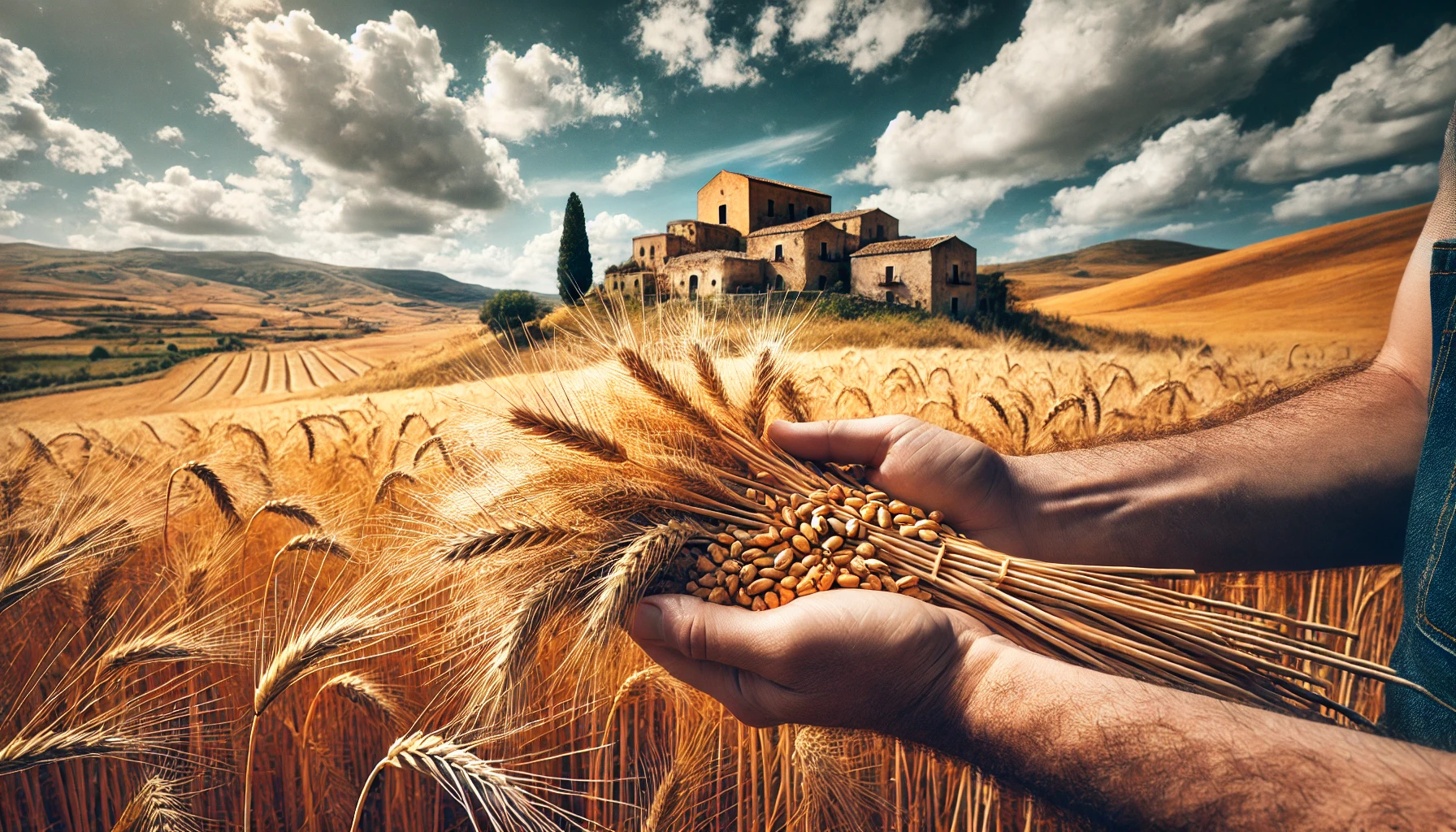Rediscovering Sicily’s Ancient Wheat Varieties
Giuseppe Li Rosi, a dedicated Sicilian farmer, has successfully transformed 100 hectares of his family’s land by growing traditional local wheat varieties. Faced with the pressures of international agricultural markets dominated by French and Canadian wheat, Li Rosi and other local farmers have found an alternative path that preserves both the quality of their products and the local economy. These “ancient grains” are being rediscovered after nearly a century of being forgotten.
Timilia, Maiorca, and Strazzavisazz: Ancient Grains Return
Ancient grain varieties such as Timilia, Maiorca, and Strazzavisazz were once known to the ancient Greeks and cultivated by the Romans. They were commonly used until the early 20th century, only to fade into obscurity. Today, they are experiencing a revival, particularly because they serve as excellent substitutes for modern wheat, offering benefits to people with celiac disease or other gluten intolerances. However, the resurgence of these grains isn’t solely driven by health concerns. By cultivating ancient wheat using traditional Sicilian methods, farmers are helping to revive the local economy, creating jobs, and alleviating the region’s economic crisis.
Organic Farming and a Growing Market
Sicilian farmers are increasingly turning to organic farming, and Sicily is now one of the leading regions in Italy for organic products. The cultivation of these ancient grains represents a significant development in this movement. Farmers committed to growing ancient wheat must dedicate at least 10 hectares to each variety, ensuring the purity of the seeds.
Li Rosi, who is also the president of “Simenza,” an association for Sicilian seed preservation, has gathered around him a group of 70 producers. However, there is no shortage of interest—over 100 more farmers are eager to join this agricultural revival.
Resilience Through Diversity: The Benefits of Ancient Wheat
Unlike the uniformity of multinational grain varieties, which are often cultivated under strict conditions, ancient wheat is grown using seed mixtures, creating diversity that enhances both the quality of the crop and the fertility of the soil. These time-honored techniques, passed down over thousands of years, require patience. In the first year, yields may be moderate, but by the second and fourth years, production sees significant increases.
A Threat to Big Agriculture?
Despite the success of ancient grain cultivation, there is concern that powerful global agricultural organizations might eventually claim that these local grains are dangerous or harmful, in an attempt to curb this growing movement. However, for Sicilian farmers, the revival of ancient wheat offers a much-needed boost to the local economy, providing a lifeline for small-scale farming and a sustainable future for the island.
By embracing these ancient grains, Sicily is not only preserving its agricultural heritage but also providing a resilient and profitable alternative to the dominance of multinational corporations in the global food industry.
